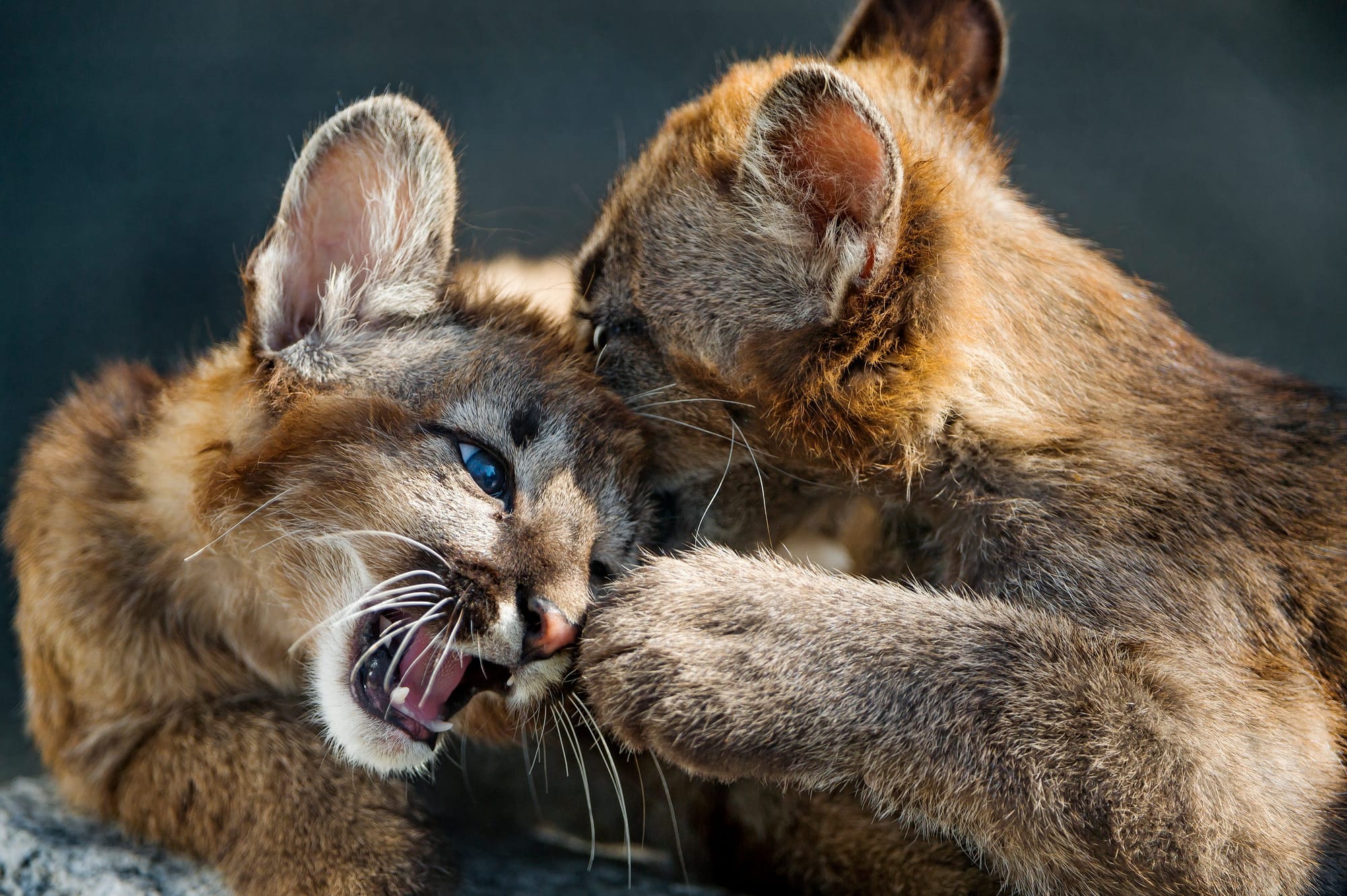
We’ve already discussed how important play is for socialization, but what about in an almost completely asocial species? What kind of play behavior would they exhibit, if any? Would there be a difference in play between life stages? There is an interesting dichotomy present in this regard in many species of large cats. The exception, of course, is the lion, Panthera leo, which is highly social even into adulthood. However, other large cats such as the cougar, Puma concolor, tiger, Panthera tigris, and jaguar, Panthera onca, are all mainly solitary for the majority of their adult lives, only seeking out other adults for the purposes of mating (or ejecting an interloper from their territory).
However, these large cats are also known for being highly playful, not just in captivity but also in the wild. Does this mean that their play only has a preparatory nature? What would the need be for social play in a species that does not congregate in large groups? Interestingly enough, this is not the case at all. Social play is vital for these cats because of an interesting quirk of their reproduction and development.
The males of these large cats do not usually take any part in rearing the young, which are born in litters (most commonly of two cubs but sometimes as many as six). The cubs stay with their parent for an extended period of time, even after being weaned and becoming capable of hunting prey on their own. Most cubs do not fully separate from their mother until they are about two years old. Because of this extended time period around their mother and siblings, social play is key for the bonding of the family group.

In some species, like the tigers above, the social aspects of play are even more heightened, as an individual cub may become more dominant in a litter and take a leadership role in directing the group’s play. These individuals will also be more likely to become independent and strike out on their own at a slightly earlier age. Furthermore, tigers have shown some exceptions to the general rule of females doing all the care-giving for the cubs. On rare occasions, male adults have been documented in close proximity to and caring for young tigers, usually their own offspring. At one point, a male tiger was even observed raising two cubs after their mother died of an illness.
Baby Jaguars Are Mischievious Compilation by Animals are Awesome, YouTube
On occasion, solitary individuals will share kills with others in the area and some cougars will even organize themselves into slightly larger groups based on the contiguous territories of dominant males. Individuals in these groups will even interact socially with one another with much more frequency than they would with an outside individual.
These more social behaviors are rare in adult large cats, but they clearly are advantageous in certain circumstances. Because of this, the social play that occurs during their childhood can still serve an evolutionary purpose later in life even for predominantly solitary species. Unlike the domestic cats from three weeks ago, these animals have not been bred for the use and enjoyment of a highly social species (i.e. humans). Their socialization is due to increased survival in early years and niche cases in adulthood, yet it is still something amazing to behold all the same.
As Season 6 begins to draw towards its conclusion, I hope you all are beginning to see why I was so excited to share this particular topic with you. It holds fascinating natural stories, but it also serves as much as a mirror for ourselves as a window onto the wider world. You wouldn’t discount play in big cats as frivolous, even if much of it is only most useful for a short time. Why would you treat human play any differently?